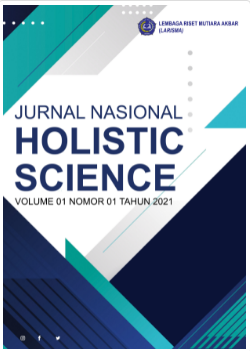Youth Pledge: Pillars of Unity in the Indonesian National Movement
Main Article Content
Abstract
The Youth Pledge is a historic moment in the journey of the Indonesian national movement which played an important role in uniting various movement organizations. Through a pledge to one homeland, one nation and one unified language, the Youth Pledge encourages a spirit of unity among youth from various backgrounds. With the spirit of unity inspired by the Youth Pledge, various national movement organizations united to achieve the ideals of Indonesian independence. The principles expressed in the Youth Pledge form a strong ideological foundation for the national movement, influencing the focus and direction of the national movement organization to further emphasize unity. Organizations such as Budi Utomo, Sarekat Islam, and Indische Partij, which emerged before and after the Youth Pledge, further strengthened their commitment to the unity of the Indonesian nation. In addition, the Youth Pledge helps build Indonesia's national identity by adopting Indonesian as the language of unity, as well as fostering solidarity among Indonesian youth in the face of colonial oppression. The period of national movement in Indonesia lasted from the founding of Budi Utomo in 1908 until the collapse of the Dutch colonial government. During this period, the Indonesian people attempted to free themselves from colonialism with the aim of achieving independence, sovereignty, justice and prosperity. This solidarity is reflected in various resistance movements and political actions carried out by national movement organizations after the Youth Pledge. Thus, the Youth Pledge is not only a historical moment, but also an important milestone in uniting various organizations of the Indonesian national movement towards the ideals of independence.
Article Details

This work is licensed under a Creative Commons Attribution-ShareAlike 4.0 International License.
References
Abdul Rahman, M. Darmansyah, Suswadi, Wiyadi, S.S., Misman, 2008. Sumpah Pemuda: Latar Sejarah dan Pengaruhnya bagi Pergerakan Nasional. Jakarta: Museum Sumpah Pemuda.
Dewantara, J. A., & Nurgiansah, T. H. (2021b). Efektivitas Pembelajaran Daring di Masa Covid-19 Bagi Mahasiswa Universitas PGRI Yogyakarta. Jurnal Basicedu: Research & Learning in Elementary Education, 5(1), 367–375.
G. Moedjanto, Indonesia Abad Ke-20, (Yogyakarta: Kanisius, 1988), hlm. 25
Kementerian Pendidikan dan Kebudayaan. Merayakan Indonesia Raya. Jakarta: Kementerian Pendidikan dan Kebudayaan. (2016)
Mifdal Zusron Alfaqi, Abd. Muid Aris Shofa. PIRSA PERJALANAN HIDUP E.F.E. DOUWES DEKKER SANG PEMBAKAR API SEMANGAT NASIONALISME INDONESIA. Universitas Negeri Malang. https://journal2.um.ac.id/index.php/jpds/article/downloadSuppFile/13169/2748
Sartono Kartodirjo, dkk. Sejarah Nasional Indonesia V, (Jakarta: Departemen Pendidikan dan Kebudayaan-Balai Pustaka, 1977). Hlm. 18
Suhartono. Sejarah Pergerakan Nasional: Dari Budi Utomo Sampai Proklamasi 1908-1945, (Yogyakarta: Pustaka Pelajar, 1994)
T. Karyanti. 2010. Sumpah Pemuda dan Nasionalisme Indonesia. Majalah Ilmiah INFORMATIKA Vol. 1 No. 3 September
Zuhdi. (2014). Kemerdekaan Indonesia: Sejarah Perjuangan dan Pencapaian. Jakarta: Penerbit Pusaka.
https://museumpendidikannasional.upi.edu/sejarah-sumpah-pemuda-1928

